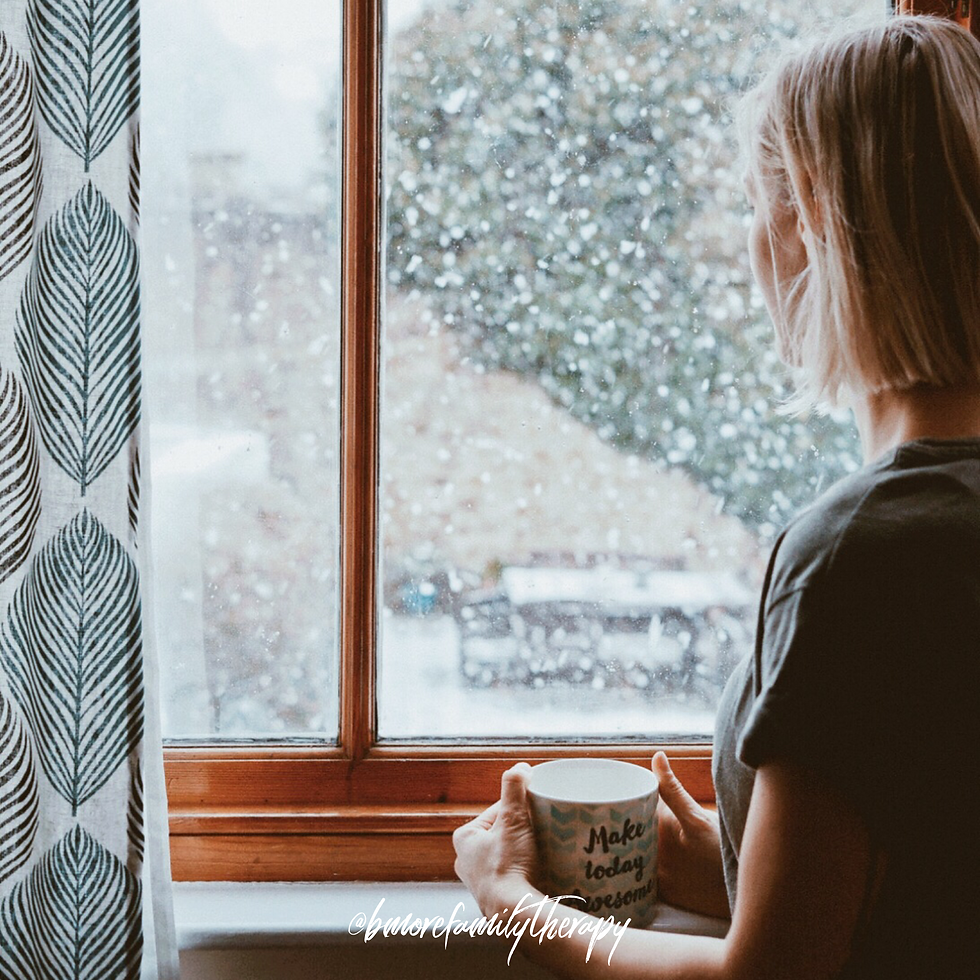Conquering Your SAD
- Kristi Thrailkill, LCSW-C
- Feb 12, 2019
- 3 min read

It's hard to decipher if your feelings of gloom are within "normal limits" during the colder months of November through March. It's not atypical to want to spend the day warm under the covers, dreading the cold walk to the car. However, if you find yourself teetering more to the side of not wanting to get out of bed at all, unable to force yourself to face the day--you might be suffering from Seasonal Affective Disorder, also known as SAD. SAD is a subform of Major Depression, and is typically seen in patients when the clocks change and daylight is shortened. The dark, the cold, and the dreadful winter elements can trigger a depressive episode that lasts until Spring. If you think you might be suffering from SAD, here are some tips to survive these trying months: 1. Get a check-up! When is the last time you've been to a primary care doctor? Make an appointment and request blood work be taken. You want to be sure this is a SAD issue and not a thyroid or other medical condition.
2. When you get your blood work back, don't be surprised to see your Vitamin D levels are low. Go pick up a daily supplement and take it at least through the winter months. Of course, double check with your doctor first.
3. Even though it's FREEZING outside, be sure to spend as much time as possible outside in the sunshine. Soak in those rays for as long as you can. If you can't bear it outside, sitting by a window that's flooded with sunlight can help too. So find your brightest window, set up a chair and read a good book right beside it.
4. Exercise! Take a class at the gym, pop in a DVD from your shelf, or look up at-home workouts on Youtube. It might be the last thing you want to do, so start small with a 10 minute workout, and add one minute per day until you're up to 30. Pump up that serotonin naturally.
5. Consider trying an SAD lamp. I'm a firm believer in the placebo effect, so if you really think the SAD lamps aren't going to help, I say ditch this idea. But it really can help if you believe it can. These lights are not often that effective if it's the only thing you change in your routine, but if it's used as a part of a new winter-lifestyle, it absolutely can help. Use the light for a minimum of 30 minutes a day, and use it when you first wake up, even if that means you have to wake up 30 minutes earlier than usual (say what!?). Have your coffee and read your daily news in front of it. The idea is to re-regulate the light cycle in your brain, basically tricking yourself into thinking it's Spring.
6. Plan a trip if you're able. Someplace tropical and sometime soon is best, but even if you plan something fun for early Spring, it will help to keep you looking forward to the future.
7. Watch your diet. Winter is a time for unhealthy carbs and everything sweet, but these foods aren't doing your mental health any good. Don't completely eliminate these things--if you really want the Oreo, eat the Oreo, but don't eat the whole sleeve of Oreos.
8. Get a therapist! I have several clients that come to see me only in the Winter months. They leave me in May, and we end our session with "see you in November!" There is no shame in the therapy-game, so please don't hesitate to reach out and get help. Your therapist will be able to dig deeper and find out if this truly is just a SAD thing, and they can be sure you're set and feeling better by Spring and Summer. Don't waste your Winter sure this will end in May, only to be disappointed that this episode of depression lingered right along with the change in seasons.
Follow these tips, and soon enough you should be waking up to a happier version of You, long before the tulips bloom!




Comments